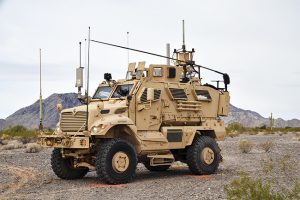
The Army is seeking industry’s help on developing a common software framework to enable synchronization of its future electronic warfare (EW) attack capabilities, a lead official said Wednesday. Col. Daniel Holland, the Army’s capability manager for EW, said such a framework will serve as a key enabler for future systems, such as the Terrestrial Layer System-Echelons Above Brigade (TLS EAB) long-range jammer that is required to counter adversaries’ emerging emitter technologies. “The Army’s requirement is to detect, automatically identify and…

 By
By 











